#nhl lymphoma
Explore tagged Tumblr posts
Text
#cancer#best oncology hospitals in india#cancer top hospital in india#cancer symptoms blood#blood cancer leukemia#best hospital of cancer in india#health & fitness#top cancer hospitals india#nhl lymphoma#good cancer hospitals in india
0 notes
Text
The Global Non-Hodgkin Lymphoma (NHL) Market is expected to grow at around 7.6% CAGR during the forecast period, i.e., 2022-27. The growth of the market would be driven primarily by the rising prevalence of B-cell lymphoma worldwide and mounting side effects of chemotherapy treatment, which, in turn, is leading to substantial R&D investments in procuring novel drugs to cure NHL. Besides, rapid drug approvals for B-cell lymphoma treatment in both developed & emerging countries and the impressive pipeline of targeted therapies, coupled with the label expansion of currently available therapies for treating various subtypes of NHL, are also driving the market.
#Global Non-Hodgkin Lymphoma (NHL) Market#Global Non-Hodgkin Lymphoma (NHL) Market News#Global Non-Hodgkin Lymphoma (NHL) Market Growth#Global Non-Hodgkin Lymphoma (NHL) Market Share
0 notes
Text
Homeopathy and Mental Health
As we all know mental health is an essential part of a person’s well-being. It is important to understand the role it plays in a person’s health. In today’s world, with different kinds of stressors, it is important to maintain a healthy mind and to have the perfect balance between mind and body. Mental health has become a concern around the world for this particular reason, with the growing number of mental health issues.
According to homeopathy the definition of perfect health is the balance of mind and body. Homeopathic medicine aims at maintaining this balance by providing medicine that can strengthen body to support the mind. The medicine in homeopathy helps to strengthen a patient’s immune system that can help the mental state.
Homeopaths and biologists acknowledge that living organisms respond to stresses in ways the case of survival. The body always protects its most vital processes first. Homeopaths thus believe that the person’s mental state is vital for survival as it governs the state of awareness that makes decisions on how the body responds to stressful or life-threatening situations. Thus on a physical level, certain vital organs, especially the brain and the heart, are essential to be protected before other organs.
Role of Homeopathy in Healing
Homeopathic treatment can help maintain balanced mental health. It can also treat some psychological issues. Mental health disorders like mania, paranoia and depression can be treated through homeopathy. From a homeopathic point of view, the rise of mental illness in our society is not just the result of living in a fast-paced, stressful society, but also because the modern medical care system has suppressed a variety of physical illnesses.
Mental health is an important part of homeopathic treatment and as such, homeopathy has treatments for various psychological disorders. It is important to understand the root cause of a mental disorder to treat it. Homeopaths believe that the suppression of physical conditions through strong medicine is the cause of various mental health problems and can be prevented through proper homeopathic treatment and care. There are no absolute cures for mental health but homeopathy can help manage the conditions that helps in maintaining the balance between mind and body.
Modern Homeopathy provides the best in Homeopathic healthcare with the help of experts and cutting-edge technology to produce medicines. We at modern homeopathy believe in providing the best care to our patients through expert guidance and care. We specialize in various incurable diseases that provide the best homeopathic solutions for painless and lasting relief.

#lymphoma#NHL#lymphomacancer#cancertreatment#cancer#treatment#homeopathy#homeopathytreatment#modernhomeopathy#kolhapur#pune#nagpur#thane#nashik#dadar
0 notes
Text
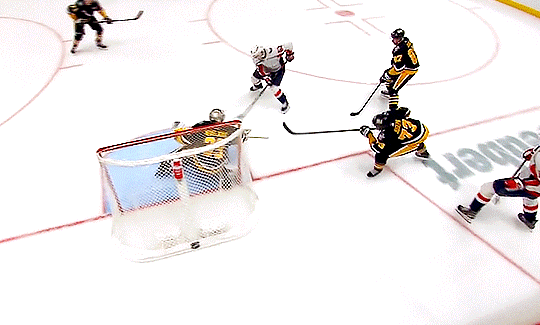
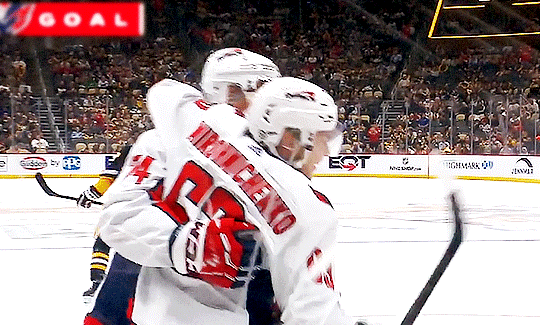
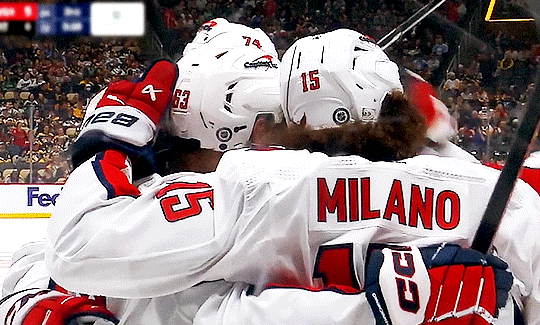
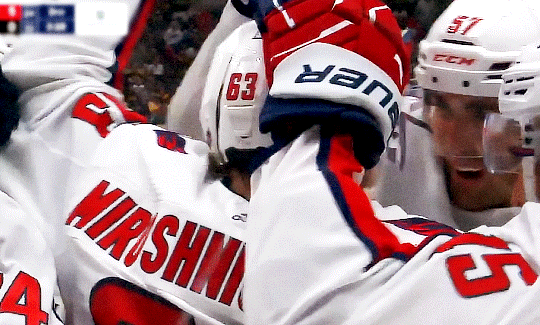
[240307 wsh at pit] capitals rookie ivan miroshnichenko scores his first nhl goal. miroshnichenko was washington's first round pick in 2022; he was diagnosed with hodgkin's lymphoma that year and briefly stepped away from hockey to (successfully) receive treatment. he is now in full remission and looks to be a crucial piece of the capitals youth movement for years to come.
+ miro gets some love from the steadfast veterans
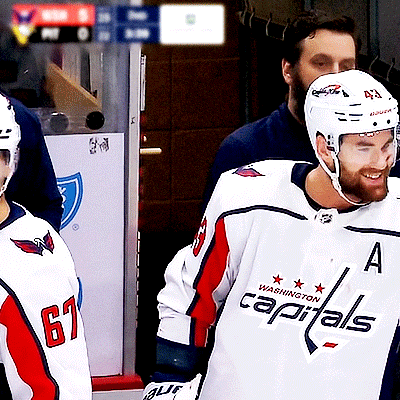
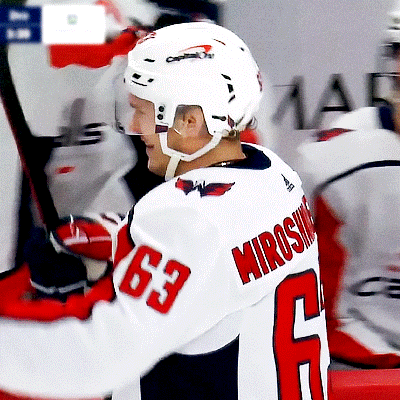
#ivan miroshnichenko#capitals#washington capitals#nhl#nhledit#hockeyedit#hockey#meg.caps#meg.gif#meg.all#perfect game actually.#so happy for him and his family and also. for the whole team!!!#there's LOVE in this house your honor!!!#something about the way they pulled together today after two trades in the past 24 hours.#my caps i LOVE you#cancer mention cw#illness cw
76 notes
·
View notes
Text

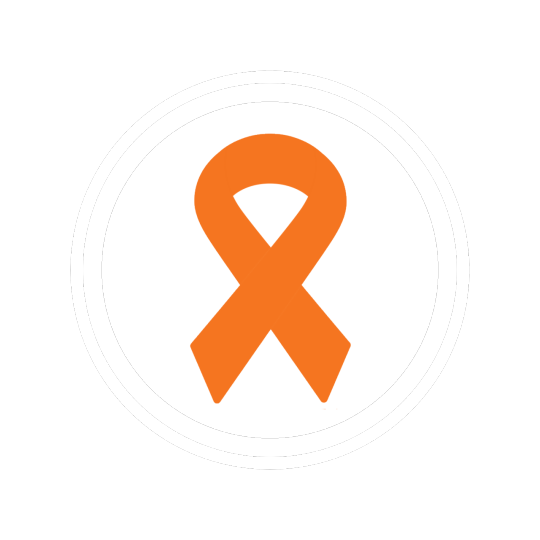

Leukemia and Lymphoma Awareness Flags!!
This flag was designed by us, as we currently have a family member with Leukemia and wish to bring awareness to this kind of cancer.
color meaning:
#FF2D34: Myeloma
#00DC0E: Non-Hodgkin Lymphoma
#FF8C2E: Leukemia
#D12DFF: Hodgkin Lymphoma
Below is information all about Leukemia and Lymphoma Cancers.
Leukemia and Lymphoma are both cancers that are not associated with a tumor. Lymphomas are cancers that affect the lymph system and start in cells called lymphocytes. Leukemia is a cancer of the early blood-forming tissues, including your bone marrow and lymph system.
There are many types of lymphoma. Some grow and spread slowly and some are more aggressive. There are two main types of Lymphoma:
1. Hodgkin Lymphoma is cancer that starts in the B lymphocytes (B cells) of the lymph system. Your lymph system helps you fight infection and control the fluids in your body.
2. Non-Hodgkin Lymphoma (NHL) is cancer that starts in the lymphocytes anywhere lymph tissue is found:
Lymph nodes
Spleen
Bone marrow
Thymus
Adenoids and tonsils, or
The digestive track.
Leukemia typically involves white blood cells, the cells that are your infection fighters. Leukemia can be divided into categories: fast growing (acute) and slow growing (chronic); and by which white blood cells are affected:
Acute lymphocytic leukemia (ALL)
Acute myelogenous leukemia (AML)
Chronic lymphocytic leukemia (CLL
Chronic myelogenous leukemia (CML)
A screening test is used to detect cancers in people who may be at higher risk for developing the disease. With leukemia and lymphoma, there are no early detection tests. The best way to find them is to be aware of the symptoms:
Swollen lymph nodes which can appear as a lump in the neck, armpit or groin;
Fever
Night sweats
Weight loss without trying, and
Fatigue.
Leukemia can have similar symptoms but also can include:
Easy bleeding or bruising;
Recurring nosebleeds; and
Bone pain or tenderness
Myeloma is cancer of the plasma cells. Plasma cells are white blood cells that produce disease- and infection-fighting antibodies in your body. Myeloma cells prevent the normal production of antibodies, leaving your body's immune system weakened and susceptible to infection. The multiplication of myeloma cells also interferes with the normal production and function of red and white blood cells. An abnormally high amount of these dysfunctional antibodies in the bloodstream can cause kidney damage. Additionally, the myeloma cells commonly produce substances that cause bone destruction, leading to bone pain and/or fractures.
Myeloma cells are produced in the bone marrow, the soft tissue inside your bones. Sometimes myeloma cells will travel through your blood stream and collect in other bones in your body. Because myeloma frequently occurs at many sites in the bone marrow, it is often referred to as multiple myeloma.
Signs and symptoms of myeloma include the following:
Hypercalcemia (excessive calcium in the blood)
Anemia (shortage or reduced function of red blood cells)
Renal damage (kidney failure)
Susceptibility to infection
Osteoporosis, bone pain, bone swelling, or fracture
High protein levels in the blood and/or urine
Weight loss
In 2022, more than 62,650 people are expected to be diagnosed with leukemia. In addition:
Leukemia accounts for 3.6% of all new cancer cases.
The overall 5-year survival rate for leukemia has more than quadrupled since 1960.
62.7% of leukemia patients survive 5 years or more.
The diagnosis of leukemia requires specific blood tests, including an examination of cells in the blood and marrow.
Treatment and prognosis depend on the type of blood cell affected and whether the leukemia is acute or chronic. Chemotherapy and blood and marrow transplant are often used to treat leukemia.
If you wish to read more about Leukemia and Lymphoma cancer, please visit this website!
#leukemia#lymphoma#blood cancer#leukemia and lymphoma society#leukemia awareness#lymphoma awareness#blood cancer awareness#pro endo#pro endogenic#endo friendly
6 notes
·
View notes
Text
NHL players and the song from The Sunset Tree that they remind me of and why
You or Your Memory- Brock Boeser (I know almost nothing about him but I know he has sad eyes)
Broom People- Brandon Tanev (idk I feel like he seems like a guy who just appreciates the beauty in the mundane parts of life)
This Year- Kris Letang (masterton finalist for a reason)
Dilaudid- Dylan Strome (this song feels like a dark goodbye to someone who vanished from your life quickly. Also the “now you see me, now you don’t/now you say you love me, pretty soon you won’t” line and how people called him a bust bc Arizona screwed him over with development)
Dance Music- any old NHLer who’s on the brink of retirement and hasn’t won a cup (I’m aware this song is about substance abuse but the whole second verse feels like something just put of reach that will be crushing if you don’t get)
Dinu Lipatti’s Bones- Matt Murray (Dinu Lipatti was a beautiful pianist who died at 33 of lymphoma, and Muzz was such a star but has been plagued by injuries ever since the back to back cups)
Up the Wolves- Jeff Carter (it’s a song about realizing that revenge isn’t worth it and how free that makes you feel. and back in like 2010 he took less money and signed an 11 year deal with the flyers… and a few days before his NTC clause was set to kick in they traded him to Columbus. Worked out for him tho bc he basically forced management to trade him and he won two cups in LA)
Lion’s Teeth- Matthew Tkachuk (a song about a power struggle. guy with daddy issues. need I go on?)
Hast Thou Considered the Tetrapod?- Artemi Panarin (I’m not touching the actual meaning of the song but the line “rise above my station” basically means “to reach a higher social position than you were born into” and Panarin went from being an undrafted free agent to basically being handed a blank check by NYR)
Magpie- Jonathan Quick (literally just the last line “and remember what we had here when there was something left to save” and how LA dumped him to Columbus after everything he did for the franchise and in what is probably his last year before retiring)
Song for Dennis Brown- every NHLer who had a family member who also played and was very good (even tho this song is basically a story, there’s still the element of “I’m almost destined to not live up to them” hidden in it)
Love Love Love- John Tavares (isles fans hate him bc back in 2018 it was a contract year and he said he wanted to stay with NYI so they didn’t trade him at the deadline but then he signed in Toronto. The line “some things you do for money and some you do for love love love” just makes me think of that picture of JT in his leaf’s pajamas when he was a kid)
Pale Green Things- any undrafted played but mainly Sergei Bobrovsky (moving past what the song is actually about, the line about “cracking asphalt underfoot, coming up through the cracks, pale green things” just makes me think about all the players who had all the odds against them but went on to be great. Specifically Bob bc he was an undrafted player, and now twice in his career he did the impossible and beat a team that made history. First Tampa, and now most recently the bruins… and he did it down 3-1 in the series)
#nhl#hockey#the sunset tree#the mountain goats#nhl players#brock boeser#vancouver canucks#brandon tanev#seattle kraken#kris letang#pittsburgh penguins#dylan strome#washington capitals#jeff carter#philadephia flyers#columbus blue jackets#los angeles kings#la kings#matthew tkachuk#florida panthers#sergei bobrovsky#artemi panarin#new york rangers#jonathan quick#vegas golden knights#john tavares#toronto maple leafs#new york islanders#matt murray#boston bruins
10 notes
·
View notes
Text
Peripheral T-Cell Lymphoma; Everything You Need To Know

Peripheral T-cell lymphoma (PTCL) is a rare and aggressive type of non-Hodgkin lymphoma (NHL). About 10-15% of NHL patients develop a T-cell lymphoma subtype. People over 60 years old are usually the ones who get affected by this type of cancer. Diagnosis of this cancer is more common in men than women. But, it does not imply that young adults, or even children, for that matter, can not develop peripheral T-cell lymphoma. However slim the chances may be.
Source: Peripheral t cell lymphoma
#peripheral t cell lymphoma#peripheral t-cell lymphoma symptoms#peripheral t cell lymphoma survival rate#universitycancercentres
3 notes
·
View notes
Text
Non-Hodgkin's Lymphoma Therapeutics to Grow to $18.5B by 2033, CAGR 6.2%
Non Hodgkins Lymphoma Therapeutics Market : Non-Hodgkin’s lymphoma (NHL) therapeutics are undergoing a remarkable transformation, offering new hope to patients facing this complex and diverse group of blood cancers. Traditional treatments like chemotherapy and radiation are being complemented by targeted therapies, immunotherapies, and cell-based treatments. Drugs such as rituximab, a monoclonal antibody, and newer, more advanced agents like CAR T-cell therapies are at the forefront of this revolution. These therapies specifically target cancer cells while sparing healthy tissue, leading to fewer side effects and higher success rates. Immunotherapy, in particular, has shown promising results, helping the immune system recognize and attack lymphoma cells more effectively.
To Request Sample Report : https://www.globalinsightservices.com/request-sample/?id=GIS26971 &utm_source=SnehaPatil&utm_medium=Article
Research into personalized medicine is further accelerating the development of novel therapeutics for NHL, tailoring treatment to an individual’s genetic makeup and the specific characteristics of their cancer. Combination therapies that pair traditional treatments with cutting-edge biologics are increasingly being explored to enhance outcomes and reduce the risk of relapse. As clinical trials expand and new therapies receive approval, the outlook for NHL patients continues to improve. Ongoing advancements in genetic profiling, biomarker discovery, and immune checkpoint inhibitors are paving the way for more precise, effective, and less toxic therapies, significantly transforming the treatment landscape for Non-Hodgkin’s lymphoma.
#NonHodgkinsLymphoma #CancerTherapeutics #Immunotherapy #CARtCellTherapy #BloodCancerTreatment #MonoclonalAntibodies #TargetedTherapies #ChemotherapyAlternatives #PrecisionMedicine #CancerResearch #PersonalizedMedicine #BiologicTreatments #LymphomaCare #OncologyInnovation #Hematology
0 notes
Text
CD19 Market Size, Target Population, Competitive Landscape, and Market Forecast to 2034
Introduction to CD19 Therapeutics
CD19, a surface protein expressed on B cells, has become a significant therapeutic target for treating B-cell malignancies such as acute lymphoblastic leukemia (ALL) and non-Hodgkin lymphoma (NHL). Therapies targeting CD19, including monoclonal antibodies and CAR-T therapies, have demonstrated remarkable clinical outcomes, driving interest and investment in this space.
CD19 Market Size and Growth Projections
The CD19 therapy market is projected to experience substantial growth, with an estimated compound annual growth rate (CAGR) exceeding 20% through 2034. This expansion is driven by the increasing adoption of CAR-T cell therapies, monoclonal antibodies, and other targeted modalities addressing CD19-positive malignancies. The global market is expected to surpass several billion dollars in valuation by 2034, reflecting a strong pipeline of innovative therapies and expanding indications.
Download report @ https://www.delveinsight.com/report-store/cd19-market-forecast
Key factors contributing to the growth of the CD19 market include:
1. Rising Incidence of B-cell Malignancies: The increasing prevalence of ALL, NHL, and related disorders worldwide fuels demand for effective CD19-targeted therapies.
2. Expanding Indications: Beyond hematologic cancers, ongoing research explores the potential of CD19 therapies for autoimmune diseases and other immune disorders.
3. Innovation in Therapeutics: Technological advances, such as next-generation CAR-T cells and bispecific antibodies, improve safety and efficacy, widening the patient base.
CD19 Market Target Population
The target population for CD19 therapies includes patients with:
1. Relapsed/Refractory Hematologic Malignancies: Patients with limited options due to resistance to traditional treatments are primary candidates.
2. Pediatric and Adult Populations: CD19 therapies have demonstrated efficacy in both children (especially for ALL) and adults, ensuring broad applicability.
3. Emerging Areas: Research into autoimmune conditions, where CD19-expressing B cells play a role, could further expand the target demographic.
As the therapeutic landscape evolves, the patient pool is expected to grow, particularly with earlier-line approvals and the development of safer, more effective treatments.
CD19 Market Competitive Landscape
The CD19 market features a highly competitive environment with contributions from both large pharmaceutical companies and innovative biotech firms. Key players in this space include:
1. Novartis: Known for its CAR-T therapy Kymriah, the first FDA-approved CAR-T targeting CD19, Novartis has established itself as a market leader.
2. Gilead Sciences (Kite Pharma): With its Yescarta therapy, Gilead continues to dominate the treatment landscape for large B-cell lymphoma.
3. Bristol Myers Squibb: Through Breyanzi, BMS has entered the CD19 CAR-T space, expanding its oncology portfolio.
4. Emerging Biotechs: Companies such as Allogene and Cellectis are advancing allogeneic CAR-T therapies, focusing on improving accessibility and scalability.
Request for a sample report @ https://www.delveinsight.com/report-store/cd19-market-forecast
CD19 Market Strategic Developments:
- Biosimilar Competition: With patents on existing therapies expiring in the coming years, biosimilars are expected to play a significant role, enhancing competition and accessibility.
- Collaborations and Partnerships: Companies are increasingly collaborating to address manufacturing bottlenecks and regulatory challenges.
CD19 Market Trends and Innovations
1. Next-Generation Therapies: Dual-targeting CAR-T cells and engineered antibodies that improve specificity and reduce toxicity are gaining momentum.
2. Global Expansion: Approvals in emerging markets, including Asia-Pacific and Latin America, will drive market growth as healthcare systems improve access to advanced treatments.
3. Manufacturing Improvements: Efforts to streamline the production of autologous therapies and develop off-the-shelf options will enhance scalability and affordability.
CD19 Market Forecast to 2034
By 2034, the CD19 market is expected to:
- Exceed Multi-Billion Dollar Valuations: Driven by a robust pipeline and expanded indications, the market will continue its upward trajectory.
- Transform Treatment Paradigms: Improved technologies and broader indications will establish CD19-targeted therapies as standard care for many malignancies.
- Increase Global Accessibility: Collaborative efforts to address pricing and manufacturing challenges will make therapies available to a broader range of patients worldwide.
CD19 Market Challenges and Opportunities
Challenges:
- High Costs: Current therapies, particularly CAR-T, are expensive, posing affordability and reimbursement challenges.
- Complex Manufacturing: The personalized nature of autologous CAR-T production limits scalability and availability.
Opportunities:
- Emerging Markets: Expanding into underrepresented regions offers significant growth potential.
- Allogeneic CAR-T Therapies: Off-the-shelf solutions will address cost and manufacturing bottlenecks, transforming the market landscape.
The CD19 market is poised for substantial growth, driven by innovation, expanding indications, and improving accessibility. As therapies evolve to address challenges such as cost and toxicity, their potential to transform the oncology landscape remains unmatched. By 2034, CD19-targeted treatments will likely be at the forefront of precision medicine, offering hope to millions of patients worldwide.
For further insights, explore DelveInsight's [CD19 Market Forecast](https://www.delveinsight.com/report-store/cd19-market-forecast).
0 notes
Text
#cancer#cancer top hospital in india#top cancer hospitals india#best oncology hospitals in india#health & fitness#good cancer hospitals in india#best hospital of cancer in india#cancer symptoms blood#blood cancer leukemia#nhl lymphoma
0 notes
Text
Non-Hodgkin Lymphoma Therapeutics Market: Exploring Advanced Therapies and Future Growth Potential - UnivDatos
According to a new report by UnivDatos Market Insights, Non-Hodgkin Lymphoma Therapeutics Market, is expected to reach USD 16524 Million in 2030 by growing at a CAGR of 7.7%. Non-Hodgkin lymphoma (NHL) therapeutics refers to the medical treatments and interventions aimed at managing and combating this type of cancer. Non-Hodgkin lymphoma is a group of cancers that affect the white blood cells called lymphocytes, which play a crucial role in our immune system. The development of innovative therapeutics for NHL has significantly improved patient outcomes. Therapeutic options for NHL include chemotherapy, immunotherapy, targeted therapy, radiation therapy, and stem cell transplantation. Chemotherapy involves the use of drugs to destroy cancer.
Request To Download Sample of This Strategic Report - https://univdatos.com/get-a-free-sample-form-php/?product_id=53024&utm_source=LinkSJ&utm_medium=Snehal&utm_campaign=Snehal&utm_id=snehal
The report suggests that the Rising Number Of Clinical Trials is one of the major factors driving the growth of the market during the forthcoming years. non-Hodgkin lymphoma therapeutics market has witnessed a significant growth in recent years, and one prominent driving factor behind this trend is the rising number of clinical trials conducted in this field. Clinical trials play a crucial role in the development and advancement of therapies for non-Hodgkin lymphoma, a type of cancer that affects the lymphatic system. These trials are designed to rigorously evaluate the safety and efficacy of new treatments, including novel drugs, immunotherapies, and targeted therapies specifically tailored for non-Hodgkin lymphoma. The increasing number of clinical trials indicates a growing interest and commitment from researchers, pharmaceutical companies, and healthcare professionals to find better treatment options for patients facing this challenging disease. For instance, in 2022, a study published in November projected that there would be a 43% increase in new non-Hodgkin lymphoma cases by 2040, which is expected to drive market growth due to rising adoption of NHL therapeutics.
Recent Technological Advancements:
Bispecific and trispecific antibodies have emerged as promising opportunities in the field of non-Hodgkin lymphoma (NHL) therapeutics. These antibodies are designed to target multiple antigens simultaneously, offering enhanced specificity and efficacy in treating NHL. Bispecific antibodies (BsAbs) are engineered to bind to two different antigens. In the context of NHL, BsAbs can be designed to target tumor-specific antigens present on lymphoma cells, as well as immune cells like T cells. By bridging tumor cells with immune cells, BsAbs can enhance the immune response against lymphoma, leading to improved tumor cell killing. One example of a bispecific antibody in NHL therapeutics is blinatumomab, which targets CD19 on lymphoma cells and CD3 on T cells.
Trispecific antibodies (TsAbs) take this concept further by targeting three different antigens simultaneously. In NHL therapeutics, TsAbs can target tumor cells, T cells, and accessory cells like natural killer (NK) cells. By engaging multiple immune cells, TsAbs can provoke a more robust immune reaction against lymphoma. TsAbs hold potential for even greater efficacy in treating NHL, and various research and development efforts are ongoing to explore their therapeutic benefits.
Immunotherapy Gaining Traction in Market
Immunotherapy is gaining attraction in non-Hodgkin lymphoma (NHL) treatment due to its promising potential and positive clinical outcomes. Here's why:
1. Targeted Approach: Immunotherapy specifically targets cancer cells by exploiting the body's immune system. It helps to identify and attack cancer cells more effectively while sparing healthy cells, minimizing potential side effects.
2. Improved Response Rates: Studies have shown that immunotherapy can significantly enhance response rates in non-Hodgkin lymphoma patients. Certain immunotherapy drugs, such as checkpoint inhibitors and CAR-T cell therapies, have demonstrated remarkable efficacy, especially in refractory or relapsed cases.
3. Long-term Benefits: Immunotherapy has shown the potential to induce durable responses. It can provide prolonged remission periods and even potential cures for some patients, leading to better long-term survival rates and improved quality of life.
Ask for Report Customization - https://univdatos.com/get-a-free-sample-form-php/?product_id=53024&utm_source=LinkSJ&utm_medium=Snehal&utm_campaign=Snehal&utm_id=snehal
Conclusion
The non-Hodgkin lymphoma therapeutics market is experiencing a paradigm shift with the development of targeted therapies, immunotherapies, and precision medicine. These advancements have significantly improved the treatment landscape for patients, providing them with more effective and personalized options. The increasing prevalence of non-Hodgkin lymphoma and the ongoing investments in research and development activities suggest a promising future for the market. However, further efforts are needed to enhance accessibility, affordability, and awareness of these innovative treatment modalities to ensure optimal patient care.
0 notes
Text

Hodgkin Dışı Lenfomanın 7 Belirtisi (Non-Hodgkin Lenfoma) Hodgkin dışı lenfoma (Non-Hodgkin Lymphoma, NHL), lenfatik sistemdeki anormal hücre büyümesiyle karakterize olan bir grup kanser türüdür. Read the full article
0 notes
Text

Modern Homeopathy, the Research and Treatment Center started in 1996. Modern Homeopathy is now serving across the globe providing uninterrupted care to our patients. Dr. Vijay Kumar Mane, CEO of Modern Homeopathy has been compassionately researching traditional homeopathy with his 28 years of extensive experience. Modern Homeopathy has been providing treatment for Cancer, Liver Cirrhosis, Kidney failure, Heart diseases, Diabetes, Arthritis, Blood disorders, Lung diseases, and many others with painless treatment and reviving those lives who have lost faith in their life.
#lymphoma#NHL#lymphomacancer#cancertreatment#cancer#treatment#homeopathy#homeopathytreatment#modernhomeopathy#kolhapur#pune#nagpur#thane#nashik#dadar
0 notes
Text
What are the different types of blood cancer and their symptoms?

Blood cancers, also known as hematologic cancers, affect the blood, bone marrow, and lymphatic system. The three primary types of blood cancer are leukemia, lymphoma, and multiple myeloma. These cancers interfere with the production and function of blood cells, leading to various health challenges. Here’s an overview of each type, its subtypes, and common symptoms, as highlighted by cancer organizations like the National Coalition for Cancer Survivorship (NCCS).
1. Leukemia
Leukemia originates in the blood and bone marrow, where it disrupts the formation of white blood cells. This type of cancer is categorized based on how quickly it progresses (acute or chronic) and the type of blood cell affected (lymphocytic or myeloid).
Subtypes of Leukemia:
Acute Lymphocytic Leukemia (ALL): More common in children, but adults can also develop it.
Acute Myeloid Leukemia (AML): Common among adults, particularly older individuals.
Chronic Lymphocytic Leukemia (CLL): Progresses slowly and usually affects older adults.
Chronic Myeloid Leukemia (CML): Progresses slowly and primarily affects adults.
Common Symptoms:
Fatigue and weakness
Frequent infections and fevers
Easy bruising or bleeding
Bone and joint pain
Swollen lymph nodes or spleen
2. Lymphoma
Lymphoma targets the lymphatic system, a crucial part of the immune system. This cancer starts in lymphocytes (a type of white blood cell) and can spread throughout the body. The two main types are Hodgkin lymphoma and non-Hodgkin lymphoma (NHL).
Hodgkin Lymphoma (HL):
Recognized by the presence of Reed-Sternberg cells in the lymph nodes.
More treatable than non-Hodgkin lymphoma, with a high survival rate if caught early.
Non-Hodgkin Lymphoma (NHL):
Comprises a broad category of lymphatic cancers that develop in lymph nodes and other lymphoid tissues.
Includes various subtypes, such as diffuse large B-cell lymphoma and follicular lymphoma.
Common Symptoms:
Swollen lymph nodes, often painless
Unexplained weight loss
Persistent fatigue
Night sweats
Abdominal pain or swelling
3. Multiple Myeloma
Multiple myeloma affects plasma cells, a type of white blood cell in the bone marrow. This cancer disrupts the production of healthy blood cells and the immune system, leading to complications throughout the body.
Common Symptoms:
Bone pain, especially in the spine or chest
Frequent infections
Fatigue and weakness
High blood calcium levels, which can cause nausea and constipation
Anemia-related symptoms
Conclusion
Blood cancers present distinct symptoms but often overlap, making early detection challenging. The National Coalition for Cancer Survivorship and similar cancer organizations emphasize the importance of awareness and regular health screenings to help detect these cancers early.
To know more visit: https://canceradvocacy.org/
0 notes
Text
CAR-T Therapy Market Set for Substantial Growth by 2034: Size, Trends, and Future Opportunities

In the realm of cancer treatment, Chimeric Antigen Receptor T-cell (CAR-T) therapy has emerged as a groundbreaking innovation, particularly transforming outcomes for hematologic cancers like Non-Hodgkin’s Lymphoma (NHL) and acute lymphoblastic leukemia (ALL). Offering new hope for patients resistant to conventional treatments, the CAR-T therapy market is poised for significant expansion driven by scientific advancements and a widening patient base.
Market Dynamics and Growth Prospects
The CAR-T therapy market has witnessed robust growth, buoyed by rising adoption rates and an expanding repertoire of therapeutic applications. Pioneered by landmark approvals such as Kymriah by Novartis and Yescarta by Gilead Sciences, these therapies have paved the way for broader acceptance and utilization across hematologic malignancies. Looking ahead, the market anticipates further acceleration with promising developments in CAR-T treatments tailored for solid tumors.
Key Players Shaping the Landscape
Leading pharmaceutical and biotech entities have taken center stage in the CAR-T arena, driving innovation and competition. Notable players include Gilead Sciences, renowned for Yescarta, Novartis with its pioneering Kymriah, and Bristol-Myers Squibb among others. These industry giants are committed to refining therapeutic efficacy, reducing adverse effects, and expanding the scope of CAR-T therapies to encompass a wider spectrum of cancers.
Expanding Target Population and Market Reach
Initially focused on hematologic cancers, CAR-T therapies are increasingly poised to benefit a growing demographic. Factors such as rising cancer incidences, aging populations, and the extension of CAR-T therapy into earlier treatment lines are set to amplify market demand. Moreover, ongoing efforts to broaden indications to include solid tumors promise to further diversify and enlarge the eligible patient pool.
Competitive Dynamics and Future Outlook
The CAR-T landscape is marked by intense competition, where established firms and emerging biotech enterprises vie for prominence. Companies like Autolus Therapeutics and Allogene Therapeutics are spearheading innovative CAR-T developments aimed at refining therapeutic outcomes and optimizing manufacturing processes. This competitive milieu is projected to foster continual advancements, ensuring CAR-T therapies remain at the forefront of cancer care innovation.
Market Drivers and Forecasts
Driving the expansion of the CAR-T market are advancements in manufacturing technologies, enhanced patient response rates, and a robust pipeline targeting various cancer types. Projections indicate sustained growth propelled by expanded therapeutic indications and advancements in early-stage treatment protocols. Despite challenges related to cost and logistical complexities, ongoing research collaborations and manufacturing efficiencies are anticipated to mitigate these barriers.
Conclusion
As we look towards 2034, the CAR-T therapy market stands poised for transformative growth. With evolving research insights, broadening therapeutic applications, and a global footprint, CAR-T therapies are set to redefine cancer treatment paradigms. The journey ahead promises new opportunities for innovation and patient-centric care, solidifying CAR-T therapy’s pivotal role in shaping the future of oncology.
Latest Reports Offered By DeveInsight:
Stenosis Medical Devices Market | Wide Neck Bifurcation Intracranial Aneurysms Market | B-cell Non-hodgkin Lymphoma Market | Bulimia Nervosa Market | Dysautonomia Market | Hemorrhoids Market | Holter Monitor Market | Sacral Nerve Stimulator Market | Sinus Dilation Devices Market | Tendinitis Market | Vulvodynia Market | Anti Hypertension Market | Asthma Market | Castration-resistant Prostate Cancer Market | Extracorporeal Membrane Oxygenation Devices/ Extracorporeal Circulation System Market | Gastro-oesophageal Reflux Disease Market | Gonorrhea Market | Hernia Repair Devices Market | Idiopathic Thrombocytopenic Purpura Market | Monkeypox Market | Myelodysplastic Syndrome Market | Retinoblastoma Market | Sinusitis Market | Systemic Sclerosis Market | Atherectomy Devices Market | Hypercalcemia Market | Primary Progessive Multiple Sclerosis Market
#CAR-T Cell Therapy#CAR-T Cell Therapy Market#CAR-T Cell Therapy Forecast#CAR-T Cell Therapy Companies#CAR-T Cell Therapy Drugs#CAR-T Cell Therapy Therapies#CAR-T Cell Therapy Epidemiology#CAR-T Cell Therapy Pipeline#CAR-T Cell Therapy Market Size#CAR-T Cell Therapy Market Trends
0 notes
Text
Ristova 500mg Injection - Rituximab (500mg) - Roche Products - Pilcare - Exporter from India to Oman
Ristova 500mg Injection is used in the treatment of non-Hodgkin lymphoma (NHL), rheumatoid arthritis, blood cancer (chronic lymphocytic leukemia), granulomatosis with polyangiitis and microscopic polyangiitis.

0 notes